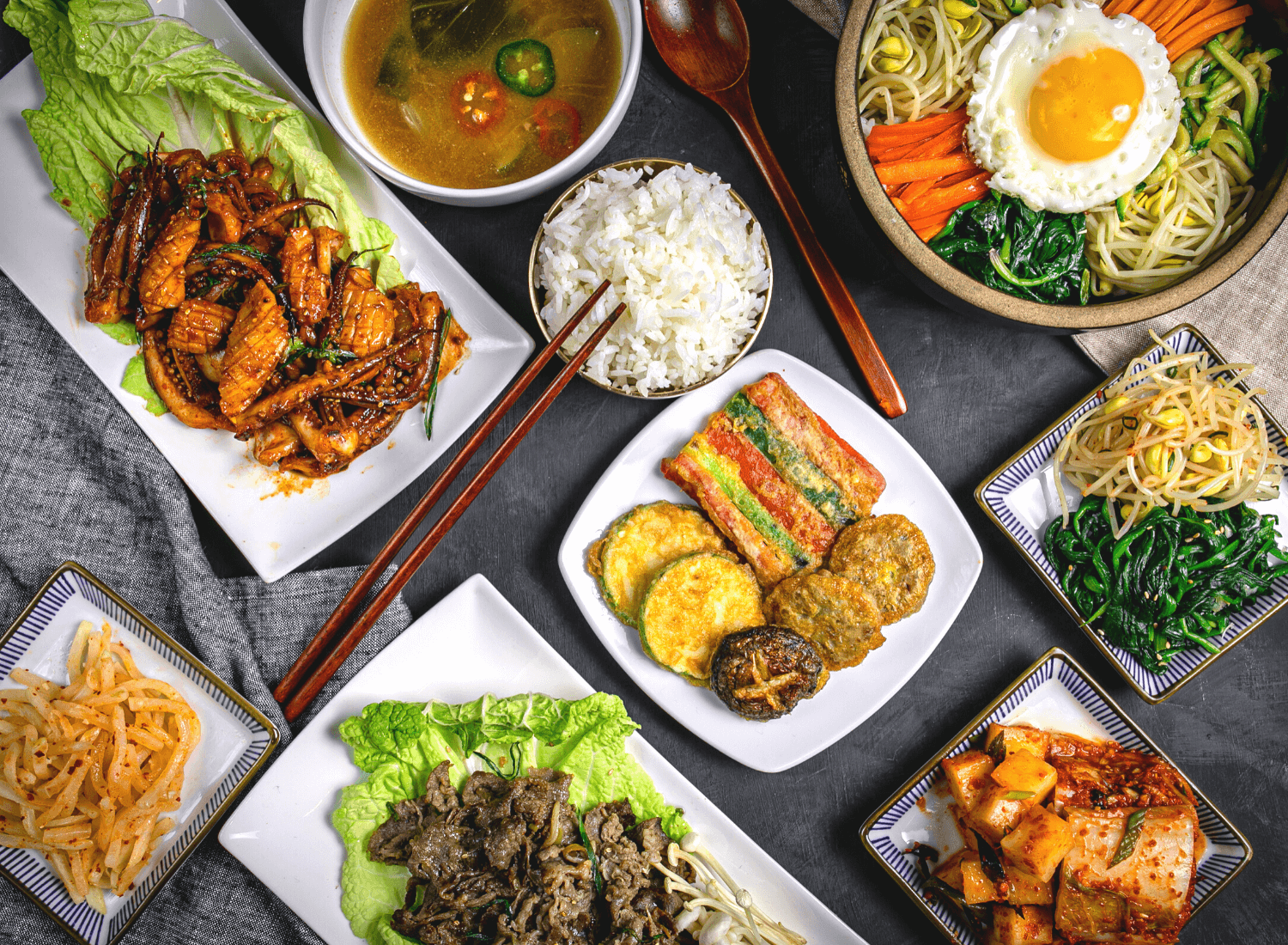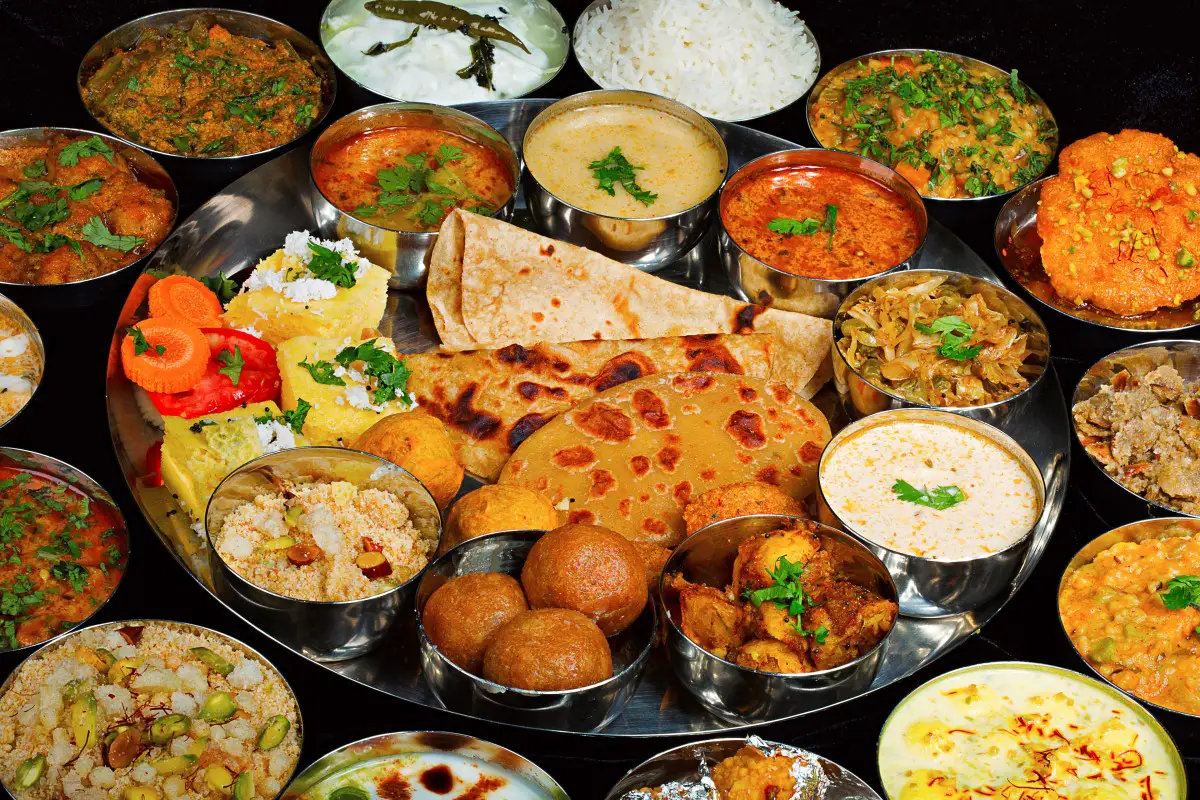Interested in the booming world of Korean food? Attracted by the many dishes that your favorite idols consume but fail to know anything about it? The complete list ranges from A-Z, the ultimate guide to Korean Cuisine!
26 Delicious Foods to Eat in Korea
1. Army Stew (Bodae Jjigae)
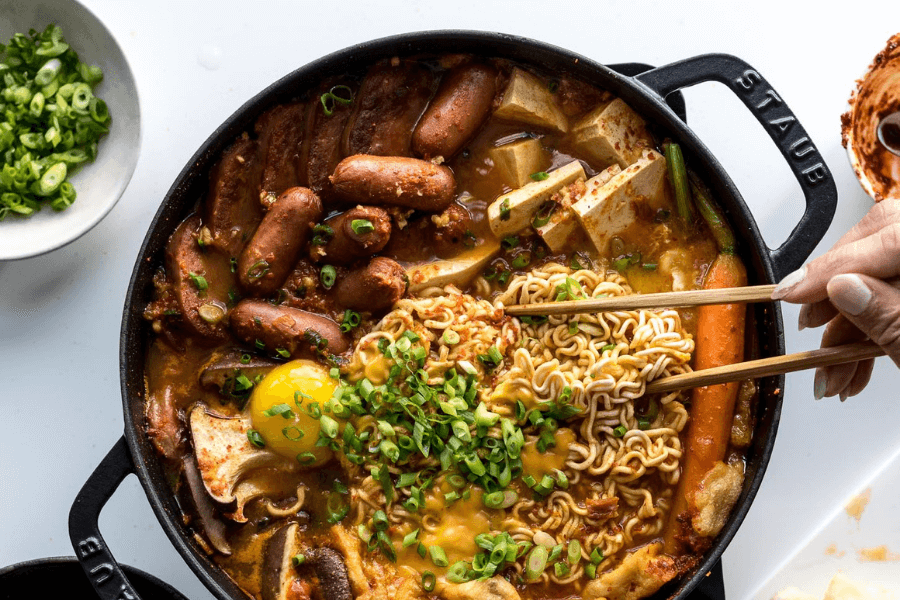
Army stew or spicy sausage stew is made with ham, sausage, spam, baked beans, kimchi, and gochujang in boiling soup. It first came to be after the armistice that ended the Korean war with any ration that could be smuggled out of U.S. army bases.
2. Black Bean Noodles (Jjajangmyeon)
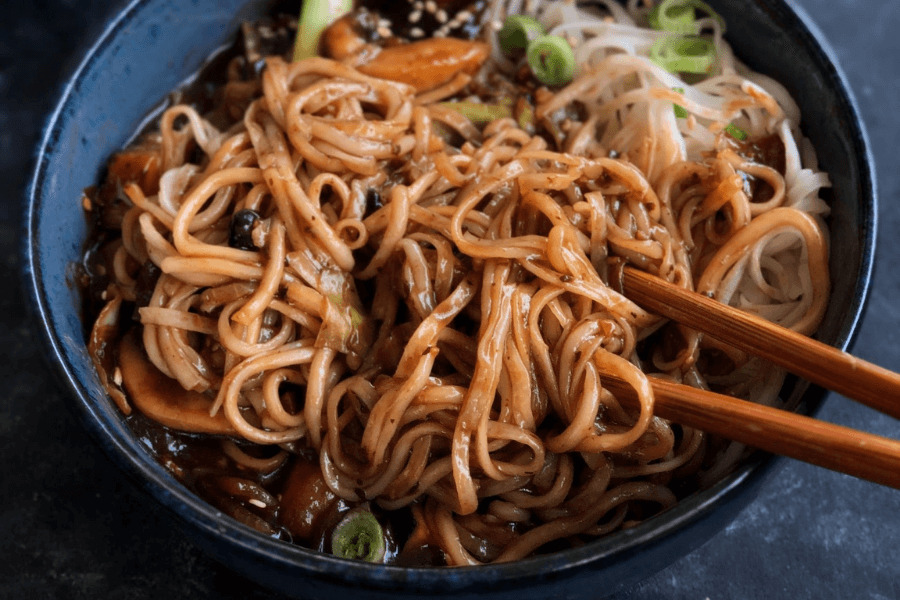
Jjajangmyeon is a popular noodle dish, stirred in delicious black bean sauce, stock and starch slurry to thicken it. The deep, salty-sweet taste is craved on important days, such as after moving to a new house or on graduation day by students to celebrate the event!
3. Chapaguri

A combination of two popular instant ramyeon noodles, Chapagetti and Neoguri, this dish established its popularity in the Oscar-Winning Movie ‘Parasite.’ It tastes like a mix of spicy and salty/sweet; a combination of the perfect umami, and can be easily found in convenience stores!
4. Doenjang Jjigae
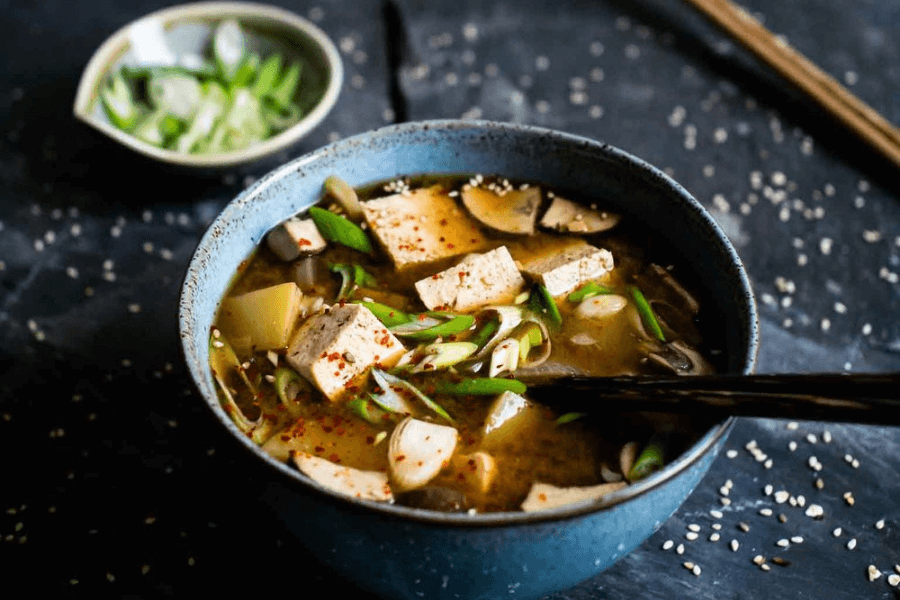
Doenjang Jjigae or Korean Soybean Paste Stew is a traditional favourite for the citizens of South Korea. Served in homes with bubbling soybean sauce (Doenjang), fresh sizzling vegetables, seafood, and meat, this dish remains a must-try in Korean Cuisine.
5. Egg Rolls (Gyeran Mari)

Gyeran Mari translates to Rolled Omelette. But what makes it so different from what you commonly eat at home? It’s the ingredients that bring the Korean twist. It consists of ingredients ranging from scallions, carrots, onions, mushrooms, zucchini, bell peppers, garlic chives to even ham, bacon, cheese, which, when added to the sizzling eggs and further beaten, rolled, and diced, make for the perfect Korean side dish!
6. Fried Chicken
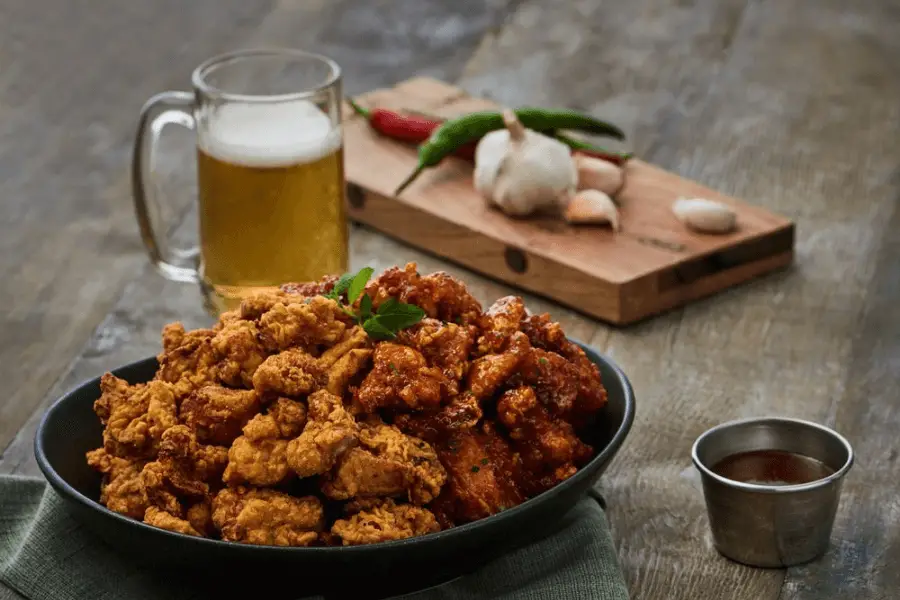
If you think you’ve eaten fried chicken before, you’re about to forget it because the taste of chicken fried in spicy sauces will blow you away! South Korea boasts its many flavours of Fried Chicken (yes, you heard it right, many!), cooked with spicy Yangyeom sauce or even sweet chocolate and served all over the country with a fresh pint of beer, creating the perfect combination!
7. Ganjang Gejang (Marinated Crabs)
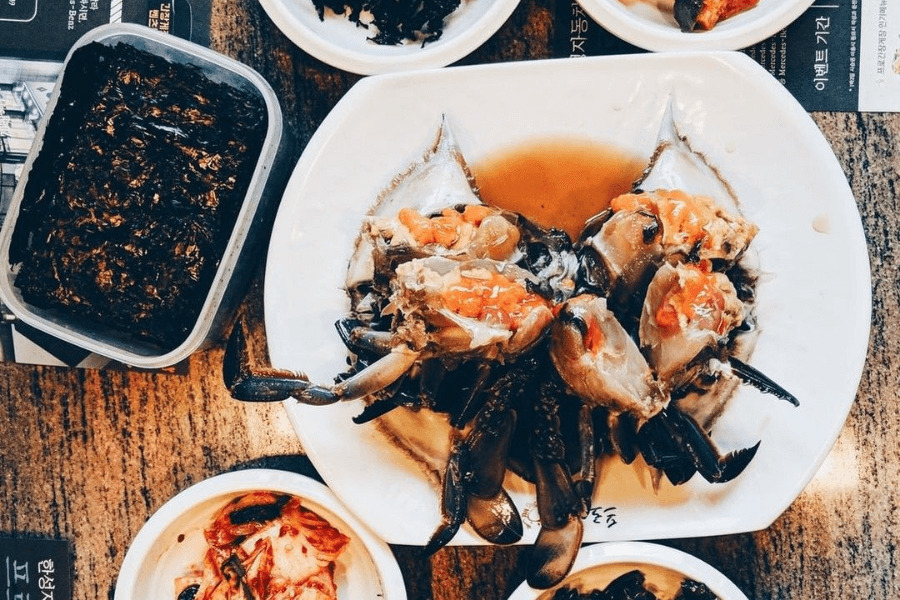
Salty and sizzling, Ganjang Gejang is made by marinating freshly caught crabs in previously prepared sauce (usually the Gajang) and sizzled over high heat in front of the customer. Crabmeat is often chewy, and it is necessary to be careful while picking, but with the Korean sauce coating it, a bowl of rice can be easily eaten with it!
8. Haemul Pajeon (Seafood Scallion Pancake)
Pancakes have never tasted like this, with scallions and fresh seafood mixed in a batter of eggs, wheat flour, rice flour, and other ingredients (even meat) before hitting the pan! The crispy pancakes are then cut into small bite-sized pieces and dipped in soup sauce to enhance the flavour. Vegetarian options include mixing Shitake mushrooms, green onions, zucchini, and other vegetables in the batter, commonly known as Yachaejeon.
9. Injeolmi
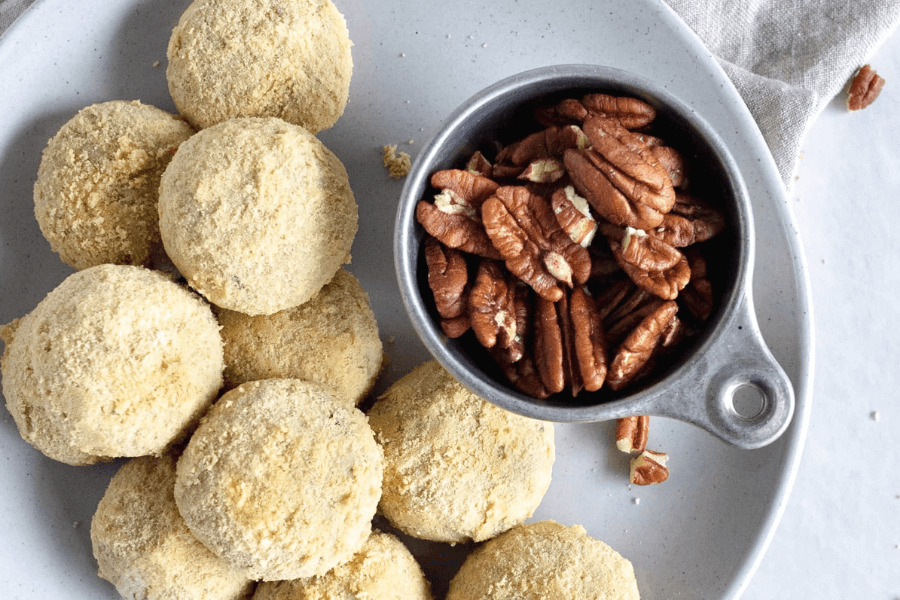
Hours of steaming white rice, pounding it till it creates a white chewy texture to make Tteok, Injeolmi is a type of Korean Rice Cake. Tteok is commonly covered with roasted soybean powder or cooked to build a hard texture. Injeolmi tastes sweet by itself but can be dipped in honey or sugar for an elevated experience!
10. Japchae

Thin glass noodles made of stir-fried sweet potato, thinly cut vegetables, beef, and a pinch of sugar and soy sauce, Japchae is known for its sweet taste and chewy composition. It places itself on every Korean table as the perfect side dish, sometimes even eaten alone with rice.
11. Kimchi
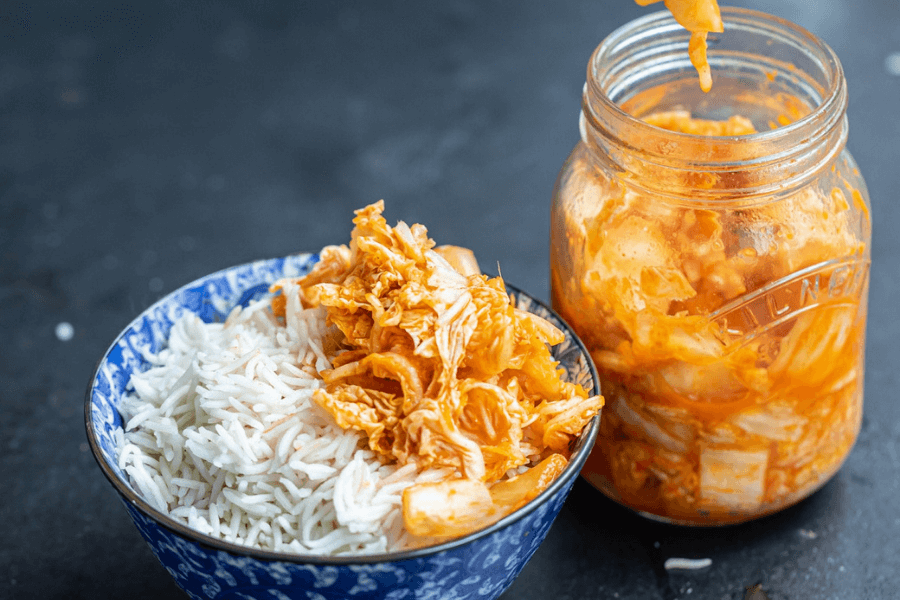
Some would even say that the K in Korea stands for Kimchi with its unbelievable varieties found across the country. Kimchi first requires salting just about any vegetable like cucumber, radish, water radish, cabbage, mustard leaves, and much more. The Korean Cuisine remains incomplete without this ultimate side dish of salted and fermented vegetables, seasoned in chili powder, spring onions, ginger, and garlic to give it a sour, crunchy taste that goes perfectly with a bowl of rice!
12. Lobster Ramyeon

A whole lobster cooked in stock and spicy sauce with multiple vegetables and the unavoidable Ramyeon noodles are rich in more than just taste. For Koreans that favour seafood often, this simply allows for the precise blend of the nutrition derived from lobster mixed with undeniably delicious Ramyeon.
13. Mudfish Soup

Also known as Loach soup, this dish comes about by boiling pond loaches in water until they grow tender and seasoning them with chilli paste, grounded black pepper, soybean paste, and ginger. The vegetables commonly added are napa cabbages, bean sprouts, Korean mint leave, and mustard greens. High in nutrition and health, Mudfish Soup is likely to bring back the life you’ve lost to the blue screens!
14. Naengmyeon
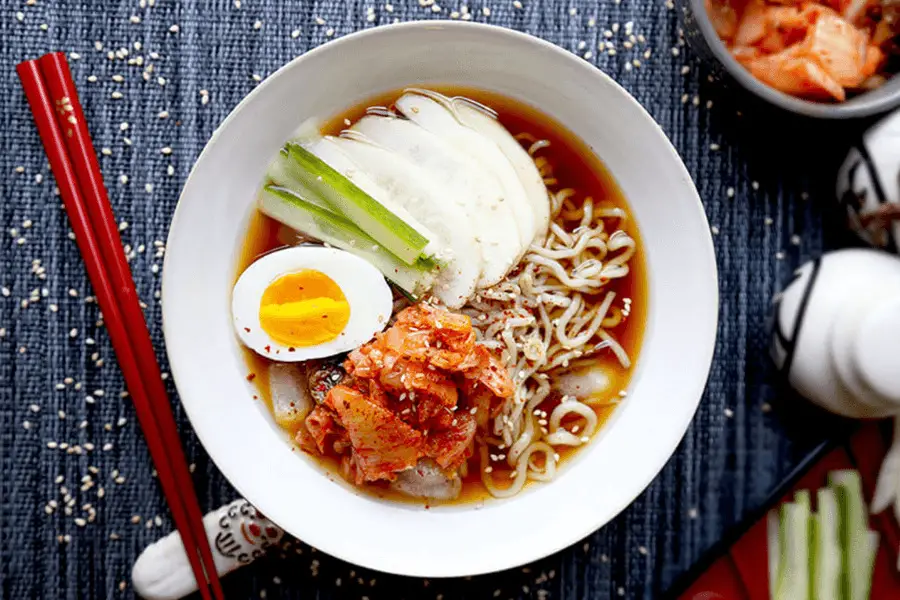
Naengmyeon is known for its two popular types: Mul Naengmyeon and Bibim Naengmyeon. Long and thin noodles made using flour are served in cold soup with beef or chicken broth to create Mul Naengmyeon. The vegetarian alternative to the same is served with vegetable broth and radish kimchi for its tangy flavour.
Bibim Naengmyeon, on the other hand, is spicy and dry, served with multiple vegetables and even meat.
15. Ox Bone Soup
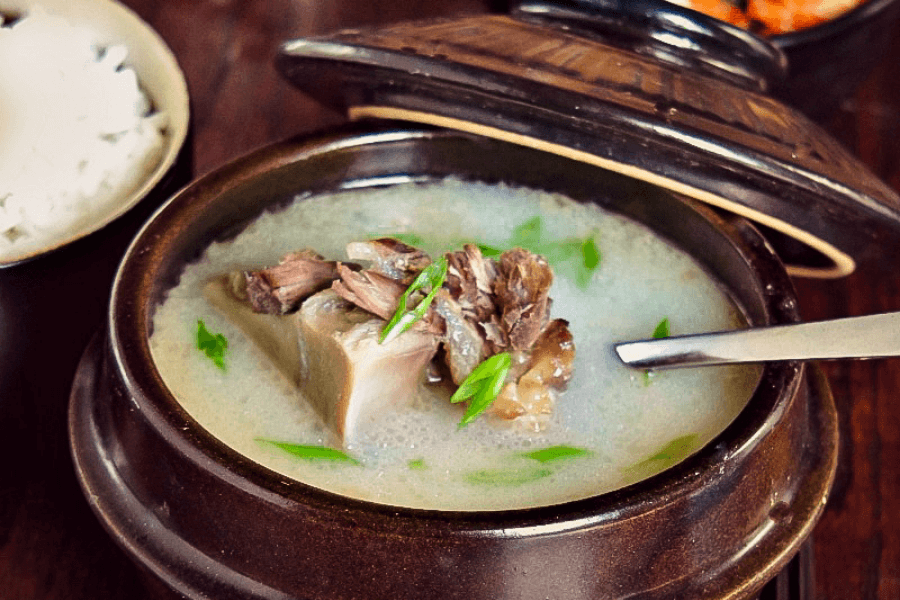
The Korean Table requires Soup just as much as it favours rice. With a milky appearance but light to the stomach, the Ox Bone Soup is made from the leg meat of oxen, brisket, and other cuts; seasoned with salt, ground black pepper, red pepper, garlic to earn the rich taste in this soup.
16. Pollock Roe Stew (Algaki)
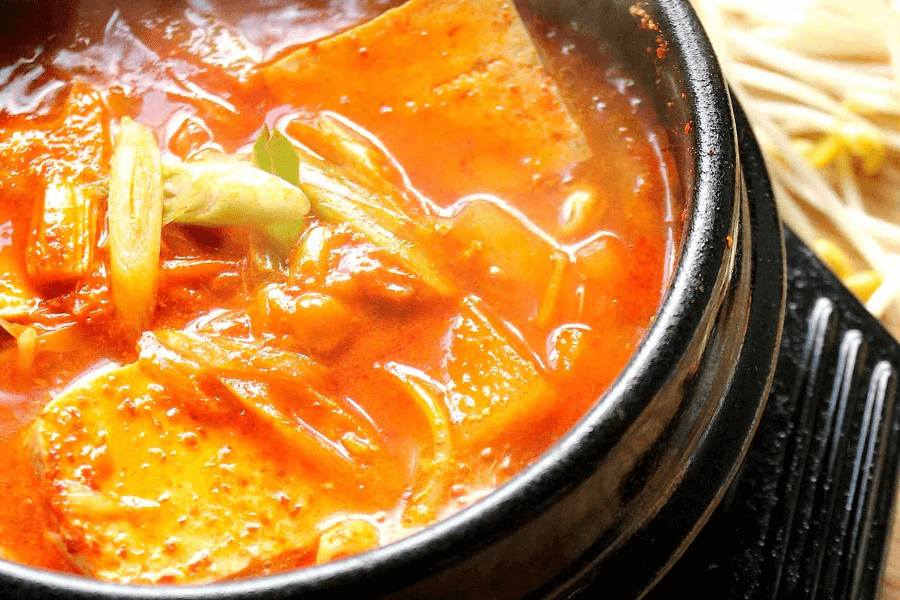
Vivid in colours of red, yellow and green, the Pollock Roe Stew or commonly called Algaki or Altang, is a spicy dish bound to replenish any exhaustion that one could possibly have! Spicy and delicious, this Korean dish is made by boiling vegetables and anchovies in an anchovy stock, seasoned along with red chilly powder, garlic, chillies, ginger, and salt.
17. Quail Eggs And Soy Sauce Beef (Jangjorim)
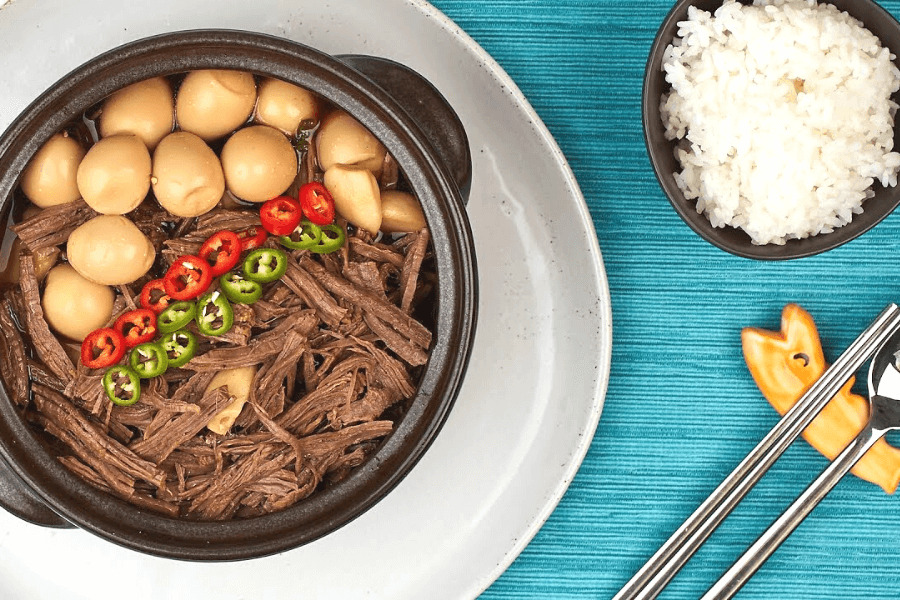
Jangjorim is a popular side dish on the Korean table, meant to be eaten in small amounts. Braised beef in soy sauce is often prepared with boiled quail eggs and mushrooms for a perfect amalgamation of salty and sweet encased in braised meat’s rich texture.
18. Ramyeon

Unavoidable, indispensable, and flawless creation of the modern mind, Ramyeon is the ultimate necessity in a Korean meal. Ramyeon refers to the Korean style instant noodles, the Maggi to their Shin. With multiple variants available everywhere and accessible at just any convenience store, Ramyeon is branded and packaged everywhere, in multiple flavours, capable of compensating for a complete meal on the go!
19. Sundubu Jjigae
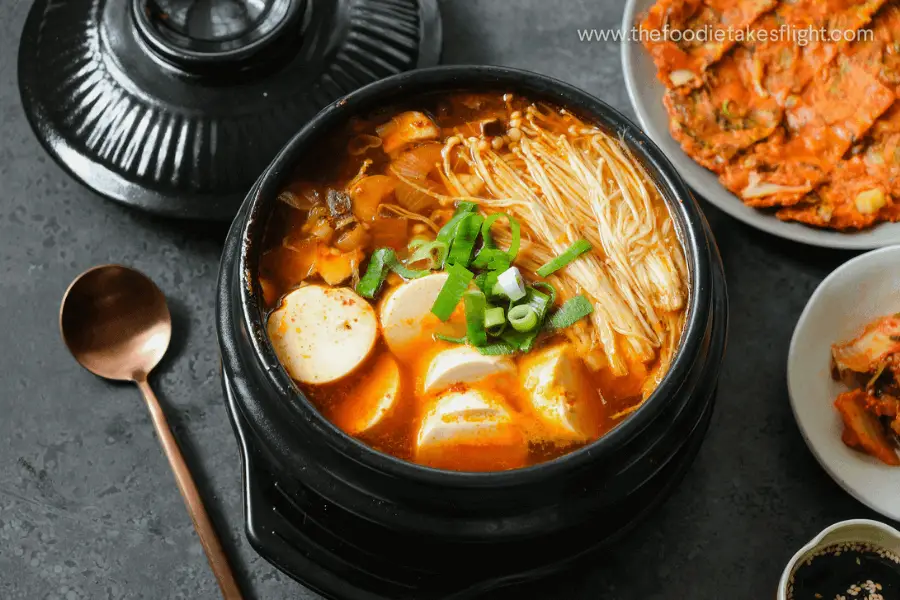
Sundubu Jjigae is a soft tofu stew that is often assembled directly into its serving vessel, a nutritious rice dish made from simmering soft tofu with mushrooms, Gochujang, green vegetables, onions, and optionally seafood. The stew is originally vegetarian, soft to eat, and spicy to taste, a unique combination for unexpected flavours!
20. Tteokbokki

“Fighting fire with fire”- a common saying for summers in Korea, refers to eating the spicey dishes when the weather is the hottest to sweat out and feel cool instead. However, Tteokbokki, or the white rice cakes stirred in spicy Gochujang sauce with warm broth, is a favourite for both summers and winters. From being sold on carts as you walk along the streets, being served with decorated parsley in high-end restaurants, or having cheesy and multiple delicious flavours for the innovation-lovers. Tteokbokki is something that definitely should not be missed out on!
21. Uyu Sikppang
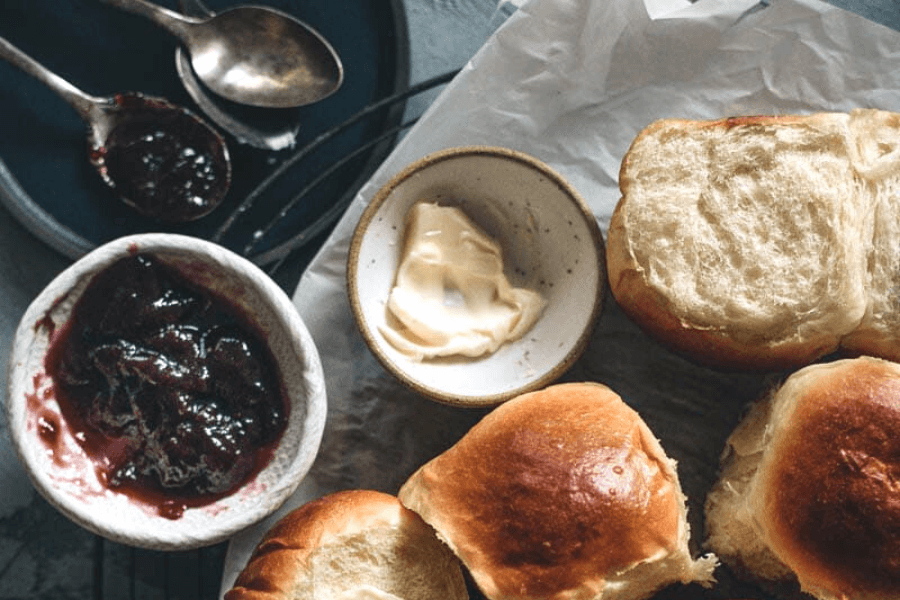
Uyu Sikppang or Milk Bread is a light, soft pillowy bread often found in Korean bakeries served in thick slices with butter and jam in between. What gives Milk Bread such a chewy, smooth texture is the milk, flour, water, mixed, heated, and thick texture added to the common dough. The sweet taste of the Milk Bread is the perfect addition to a delightful breakfast menu!
22. Vegetable Rolls (Kimbap)
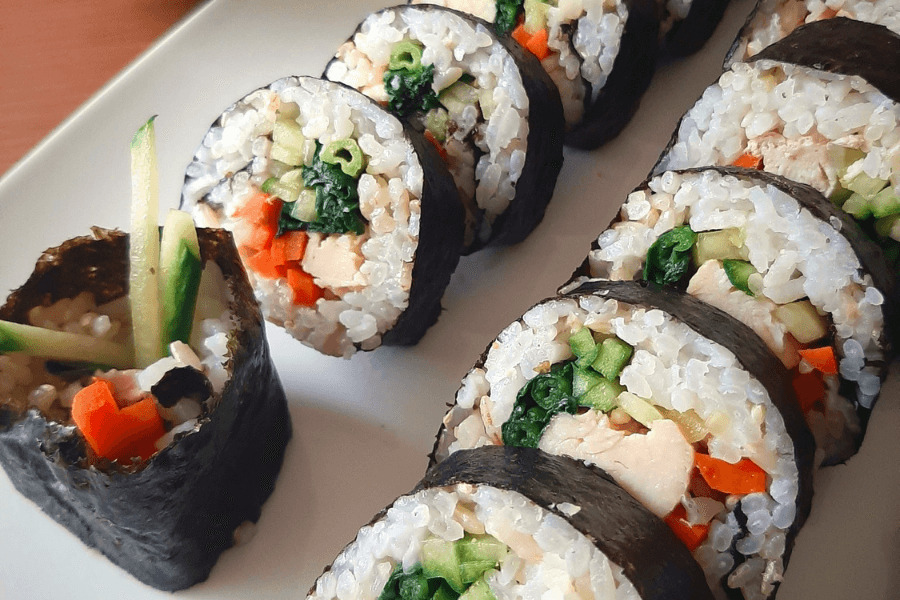
Kimbap or Vegetable Rolls are simply synonymous to the Korean household considering the extensive consumption in their daily life. Vegetables such as spinach, carrot, burdock root, cucumber are rolled in dry seaweed strips and meat and rice. The roll is then cut into bite-sized pieces and placed in boxed lunches for school-going children, picnics, and other outdoor activities!
23. Wanja Jeon

Wanja Jeon traditionally means pan-fried meat and tofu patties often served as a side dish in a Korean meal. Tofu, ground beef, carrot, onions, salt, green onions, soy sauce, ground black pepper, sesame oil are mixed, divided into pieces, and pan-fried in a mixture of egg yolk, egg, oil, and salt to form a crispy texture, chewy and ready to dig in!
24. Xiao Long Bao (Chinese Version Of Mandu)
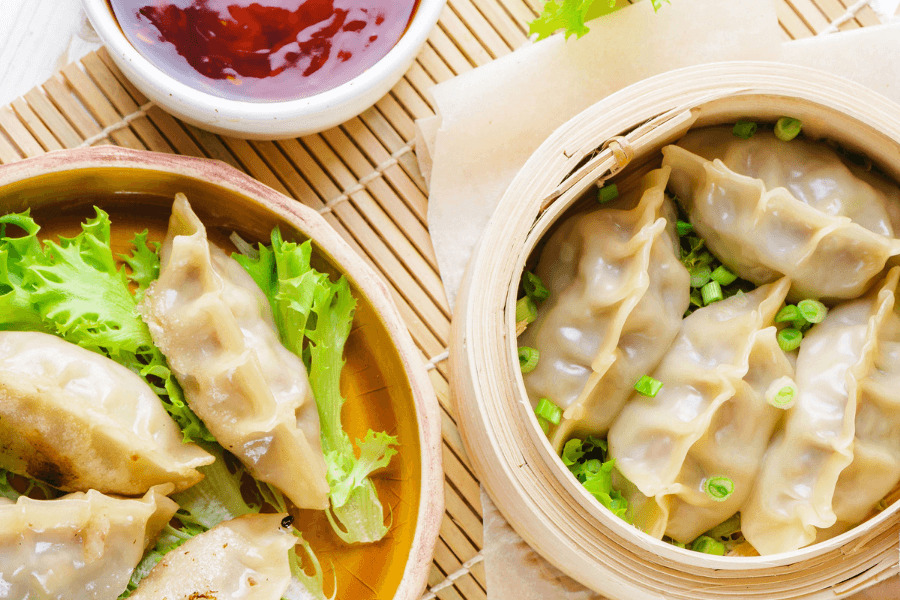
Xiao Long Bao is a Chinese term for vegetable-filled dumplings. While this dish is very popular, an equally prominent dish, regional to Korea, exists as Mandu. The Korean Mandu itself is so versatile in nature that it can be made with various meats or none at all by wrapping vegetable filings in a pinched flour wrap and steamed in a homemade steamer to surround a chewy texture.
25. Yakgwa
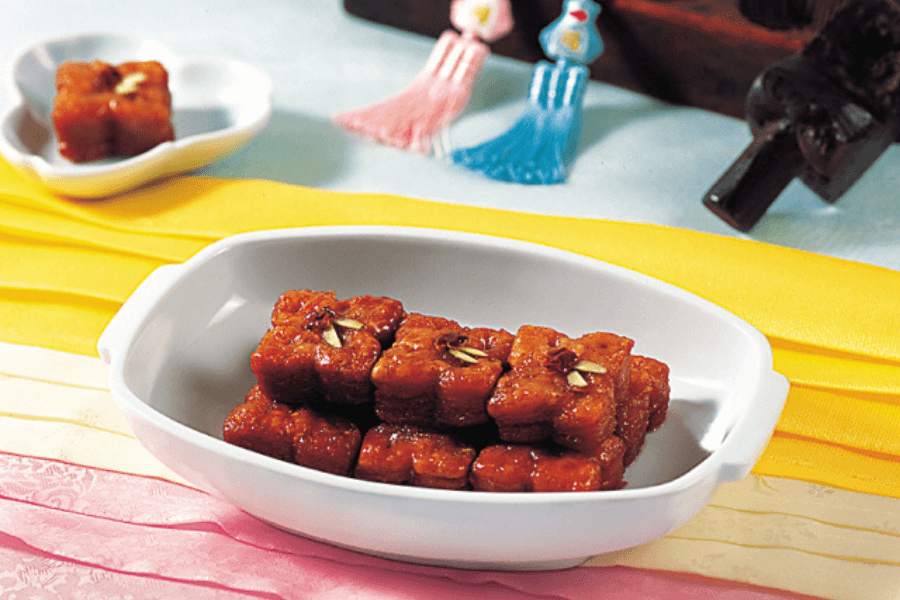
As we move on to confectionaries and desserts, Yakgwa is a traditional deep-fried, wheat-based Korean pastry made from honey, rice wine, sesame oil, and ginger juice. Traditionally placed on the table for ancestral rites, this dish follows the long-time convention of being presented during festive or important days on the Korean calendar.
26. Zucchini Fritters (Hobak Jeon)
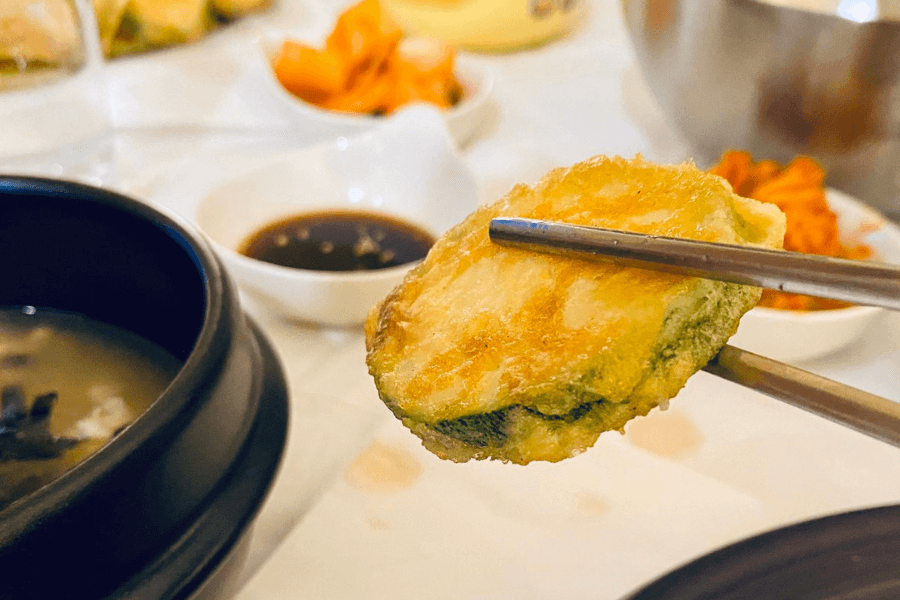
Similar to pancakes, in a way, Zucchini Fritters are a quick side dish to make. With only flour, salt, egg, and of course, zucchini in your kitchen, you can fix yourself a quick snack on hungry days!
With a list of 26 different Korean food items, the A-Z list comes to an end here. Korean Cuisine is more expansive than these items, and in a way, this list only presents the tip of the iceberg. Yet this list will allow you, if not expertise but a full overview of the kind of flavors the Korean Cuisine opens up to. Modern yet traditional, unique yet somehow familiar, the A-Z list presents a table of varieties for those of every taste, a small insight into the growing world of the K-Culture developing in India!
Read also – 23 Most Popular Non-Veg Foods to Eat in New York
